no matter how much we may want them to writing about games, by Eric Watson
Don't wanna be here? Send us removal request.
Text
The World Deserves a Genesis Classic and I Will Not Rest Until We Get One
I tried writing this intro several times by discussing the recently released Sega Genesis Flashback but things quickly got dark and I’m not sure I’m prepared to do that much swearing on here. Suffice it to say, the word is that AtGames has yet again sullied the good name of the Sega Genesis with cheap hardware, shoddy emulation, laggy wireless controllers, and a selection of games bloated with shovelware (only 45 of the included 85 games are Genesis games, with another 12 from the Master System and Game Gear.)

So what would it take for a Genesis miniconsole to rival the SNES Classic? And why is it even a worthwhile endeavor? I’m going to address the second question with this post. I mean who needs a tiny console anyway? You could always just buy a Raspberry Pi (make sure you get the right model!), install a multisystem emulator on an SD card, load up with roms from shady websites, run your antivirus software, boot up the Raspberry Pi, configure your USB controller (you did buy one, right?), and you’re good to go! I hope you like bare circuit boards and bad UI! I’m being a bit facetious, but the argument in favor of the Raspberry Pi reads a lot like arguments for gaming PCs; yes, they have a number of advantages, but they also have some significant disadvantages in terms of setup and user experience. Besides all that, an official product like the SNES Classic is well, official. There is something to be said for actually buying the games you want to play and it would be great to have a (good) official way to play Genesis games.

Despite the Genesis about matching (or exceeding, depending on the source) the SNES in total sales in the US and Europe, there seems to be a persistent narrative that the SNES is the clearly superior console with a far better library. This persists for several reasons. For one, the SNES has a much stronger RPG library with more recognizable franchises. As such, a surprisingly large number of Genesis JRPGs have languished without English translations while the number of SNES JRPGs still without them has become vanishingly small. It still surprises me that a game like Surging Aura doesn’t even have a partial translation. Genesis has significantly more action games and shooters, but these seem to have less pull today than the allure of the 16 bit JRPG.
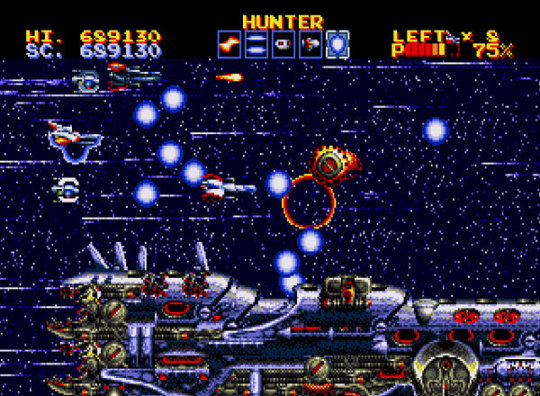
Even more significantly, the makeup of the two libraries in terms of publishers makes a big difference. Nintendo could have published the SNES Classic with only games they published themselves and still have a really solid library. There would be gaps, of course, mostly in RPG territory, but Nintendo alone could compile an incredibly solid library on their own. Sega, on the other hand, published far more games on their 16 bit console and with a little less discernment. Even as a developer, Sega wouldn’t quite hit their stride until the Saturn and Dreamcast days. As a result, most re-releases of Genesis games have several all-time classics sitting next to some pretty mediocre fair. The utter ubiquity of Kid Chameleon is a great example. It’s not a bad game, but it’s fairly middling even as far as Super Mario Bros clones go, and yet it’s seen several modern releases.
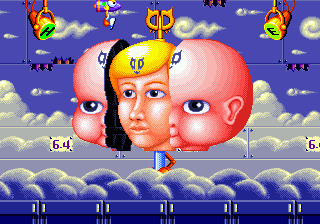
Really what all of this boils down to is this: the Genesis is an absolutely stellar console with a less-examined and more obscure library than the SNES. While the SNES Classic is absolutely worthwhile, it may be even more worthwhile to do something similar with the Genesis, if only to reintroduce the console’s library. Exactly what games should be included though is a bit more complicated, which I will cover in the next part.
1 note
·
View note
Text
Loot Crates Should Be Illegal
Look, I get it. Video games are increasingly expensive to make. Every jump in resolution and processing power increases the number of artists and designers and programmers needed just to make a finished product. In inflation-adjusted terms, the actual cost of games to consumers has fallen pretty significantly over the past 20 years. Games have grown significantly as an industry to counteract some of this, but this also means that they are a bigger risk for publishers. A bigger market means that publishers can invest more money in a game and still make it back, but it also creates greater potential for a huge flop.
So how do publishers react in this environment? The big trend a few years ago was annualization. For a while it worked, but it turns out treating games like an assembly line kills any creativity and investment in the franchise. Who could have guessed? (Time Warner circa 1983 might have guessed.) With the implosion of Assassin’s Creed and Call of Duty, publishers are now pivoting to fewer releases with longer tails.

In some ways, this has been a positive change for consumers. A game like Hitman would probably not have generated the sustained interest that it did without IO’s episodic schedule. Titanfall 2′s year of post-release content has kept me coming back long after I would have lost interest otherwise. Hitman’s episodic structure insured a steady flow of revenue without having to build all the content up front. As for Titanfall 2, the only content that is paid is aesthetic, not affecting gameplay.
So I get it! Publishers want to make money and they don’t wait to raise the price of games, so they increase revenue with microtransactions and paid post-release content. The problem comes when we get into loot boxes. In the case of Titanfall 2 and Hitman, when you want a piece of content, you buy it. I decided that I wanted some of the fancy prime skins for the titans I like using, so I bought them. I’m not really interested in the nose art available, so I haven’t bought any of them.

Loot boxes on the other hand, throw all of this content into a big bin and ask the player to pay to root around in there and see what they pull out. It’s essentially gambling. It’s gambling where you always get something, but it’s not always something that you want or value.
Unfortunately, gambling addiction is a very very real thing and these systems are engineered to exploit that fact. An insidious part of microtransactions is that them being profitable doesn’t rely on every player spending a few bucks. Instead, mobile developers have known for years that the vast majority of their revenue will come from a tiny set of their players; whales, as they are called in the industry.
The pushback I always get is “if you don’t like microtransactions, don’t by them!” and in most cases, I don’t. However, I also recognize that simply opting out isn’t an option for every player. Loot box systems are fundamentally exploitative and the option to purchase them with real money should be illegal. Data shows that despite players hating these systems, they still spend an inordinate amount of money on them, which only proves my point. Publishers will never voluntarily stop as long as it makes them money and I don’t see that stopping any time soon.
0 notes
Photo


Comparison of the size differences between a Bob-Omb Buddy and Mario in Whomp’s Fortress in Super Mario 64 (top) and Throwback Galaxy in Super Mario Galaxy 2 (bottom). Given how the Bob-Omb Buddies’ dialogue strongly implies that Throwback Galaxy and Whomp’s Fortress are the same place, the change in proportions means that in the intervening time, either they have grown or Mario has shrunk.
2K notes
·
View notes
Photo
eagerly awaiting a thirty minute game theory video about this single grey hair
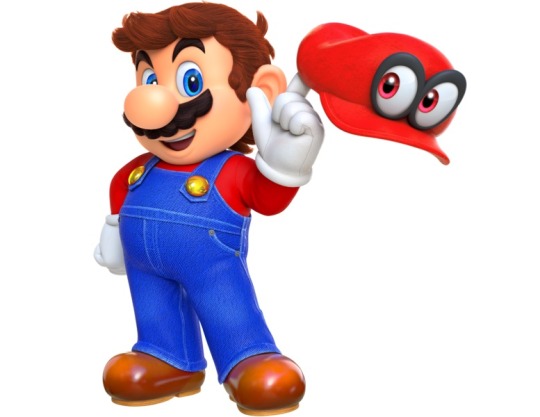


In one particular piece of official art for Super Mario Odyssey, Mario’s hair is rendered in great detail. Zooming in to the part above his ear, we can see what appears to be a single gray hair. This seems to be deliberate, as analysis of the image reveals that this is not a transparency issue, but that the hair is indeed colored a lighter color than the rest. Due to the image being released in a lossless format by Nintendo, this also could not be a compression artifact.
139K notes
·
View notes
Note
damn right
Mgs 2 or 3? Which is the better game?
2
85 notes
·
View notes
Video
This reminds me of the Sonic & Knuckles Collection on Win 95, which would run at a speed inversely proportional to the window size. Fullscreen it ran fine, but windowed it would run at like six times speed.
youtube
holy fuck
1K notes
·
View notes
Photo
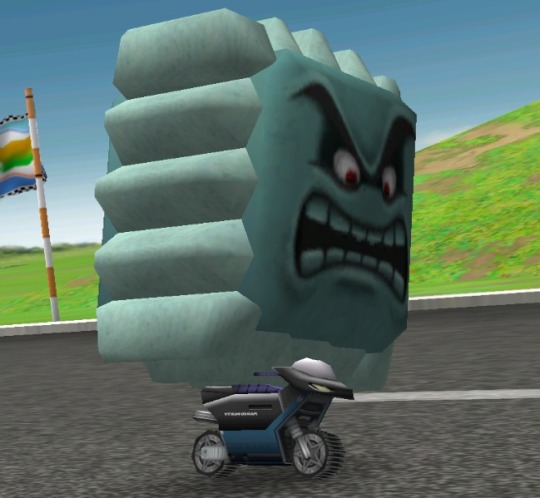
Thwomp riding his moped, seen in the Extras Zone in Mario Party 8.
39K notes
·
View notes
Text
Card Fighters Clash Arcade: a Speculative Video Game Design Document

Alright guys, the point of this whole thing is that I think about games constantly and it would probably be productive to actually WRITE those ruminations down, rather than just think them.
Anyway, earlier this week I was having a think about SNK vs Capcom: Card Fighters Clash for the Neo Geo Pocket Color. There’s a definite sense that SNK positioned Card Fighters to be the Pokemon of the NGPC. Like that game, it focuses on 1v1 battles with collectible characters and has two versions, each of which has exclusive characters. Obviously it didn’t take off like Pokemon, but it was one of the more successful games on the system and easily the one I’ve put the most time into, probably around 100 hours over the two versions. Unlike other NGPC games from SNK, this one wasn’t based on an existing Neo Geo property, though it drew characters from both SNK and Capcom’s extensive backlog and so I started thinking about what an arcade version of this game might look like, which I think is an environment that lends itself to 1v1 games better than a portable system which requires two consoles, two games, and a link cable.

To begin with, there are, as I can see, three major problems with an arcade version of Card Fighters. The first is that the game requires some kind of asymmetry of information, in that each player should only be able to see their own cards. This could be solved traditionally with a dual-screen cabinet design, though I don’t think a card game is “flashy” enough to warrant a unique cabinet design and this wouldn’t work with a Neo Geo cabinet.
The second issue is that the player would have to have some mechanism to store their cards/decks/player stats. It’s worth noting that the Neo Geo actually had a proprietary memory card that allowed players to transfer data between cabinets and systems such as this are fairly common for modern Japanese arcade games.

The final issue is that the arcade isn’t exactly an environment conducive to deck-building. I think the best solution with a traditional cabinet, say a Neo Geo, would be to give each player 60 seconds or so between matches to modify their decks as well as allowing players to pay a quarter to have three to four minutes to build a deck. It’s not an ideal solution, but in the conventional arcade paradigm, I’m not sure there is another.
That said, technology has advanced since the Neo Geo was introduced in 1990, giving us the smartphone, which I see as a solution to all three problems. By pairing the game with a companion app, players would always have access to their decks, could build decks when away from the arcade and without monopolizing a cabinet, and would have a second screen to select which card to play. They could easily link to a cabinet through bluetooth.
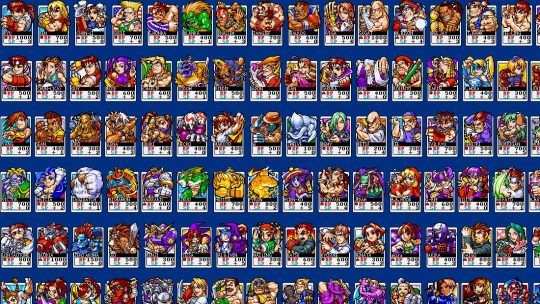
Having a companion app brings in a whole host of new possibilities. Imagine having the ability to find new cards though geolocation services like Pokemon Go. Pokemon Go was a huge deal for about a month, so imagine how well that game could have done if it actually had a robust and compelling battle system. Of course, a huge part (arguably all) of the appeal of Pokemon Go was the pokemon themselves (which explains why only the original 150 were included, though the decision not to expand to later generations is baffling). I can’t say I think SNK or Capcom’s roster have anywhere near the appeal of Pokemon, but there is some recognition there.
Additionally, one of the more controversial elements of Pokemon is the selection of gym locations, which have swamped restaurants and businesses with players. Here however, the battling locations would all be arcades, movie theaters, malls, and actually fighting would be behind the paywall of the arcade cabinet.
Obviously, arcades are pretty much dead here, and like I said, Terry Bogard doesn’t have the same level of popularity as Pikachu. (Though what if it were SNK vs Capcom vs Sega? That could be rad.) Finally I think some significant changes would have to be made to the battle system to actually gain any purchase with players. I think Card Fighters Clash is a ton of fun, but it’s also hugely unbalanced. It would need some changed mechanics and an entirely new set of cards to even begin to compete with the likes of Hearthstone.
This is just a fun thought experiment, but damn if I don’t want Hearthstone x Pokemon Go with an SKN/Capcom/Sega theme.
0 notes
Text
Podcast-Adjacent Audio File
Hello! I, along with my good friend and former roommate, Jon, recorded what I have decided to term a Podcast-Adjacent Audio File (PAAF). In this PAAF (Podcast-Adjacent Audio File) we talk about games we played in 2016. Listen to it, or don’t.
https://soundcloud.com/user-414004549/2016-in-review
0 notes
Text
Games of the Year, pt. 2

Sethian
Sethian is a small game ($5 on Steam) and one that I almost missed, but I’m glad I didn’t. A short experience, Sethian presents the player with the interface of an alien computer and a modicum of backstory, leaving you to piece together what the computer is for and what happened to the inhabitants of the planet Sethian. You do this by asking the computer questions, although there’s a slight problem: the computer only communicates in the language of Sethian. Fortunately, there is a journal to help you get to grips with the language, which feels suitably alien in grammar, consisting of abstract symbols representing nouns and verbs and a complicated punctuation system used to denote sentence structure.
The game’s main ending is relatively easy to reach with some help from the journal, but finding the hidden ending takes a true mastery of the language, something I am still working on. The computer is pretty limited in what it will respond to, but simulating an AI isn’t the goal of Sethian. Instead, it aims to make the player feel like an archaeologist, piecing together the story of a people with only a very basic understanding of their language. Moments where the computer returns a long string of symbols and you can actually cobble together some meaning from them after only an hour of study feel truly triumphant in a way few games this year felt.

Titanfall 2
In an age where multiplayer seems to be the first-person shooter’s bread and butter, it’s surprising to get so many shooters with good single-player campaigns. Titanfall 2 is one of these. Confident, stylish, and fun, Titanfall 2’s campaign is perhaps more interested in providing the player with interesting moments than presenting a cohesive whole, but damn if those moments aren’t stellar. It threads a tricky line of being challenging while still making the player feel powerful and perhaps more importantly, cool as they wallrun and slide through the game’s environments, which are akin to bespoke playgrounds for the pilot’s movement abilities.
It’s perhaps surprising then, that I actually consider the multiplayer to be the stronger component of the package. I’ve prestiged twice already and fully intend to go back for more. It’s amazing how well Respawn has managed to balance the vulnerable but nimble pilots with the powerful but plodding titans. Like Halo 5, all multiplayer post-release content for Titanfall 2 is planned to be free, so I fully intend to return to the game over the next few months.
0 notes
Text
Games of the Year, pt. 1

Halo 5
Ok, yes, Halo 5 came out in October of 2015, but it makes this list on the virtue of how much time I put into it this year. I’ve put almost exactly 200 hours into this game, 180 of which have been in the multiplayer component. I’m not sure why, but it seems that the talk around this game died down almost immediately, which is a shame because it’s absolutely the best multiplayer Halo has ever had, despite a number of changes to the player’s movement abilities. It feels like you remember previous Halo games feeling while simultaneously making those games feel slow and plodding in comparison.
Halo 5 was an excellent multiplayer shooter when it launched last year, but I feel safe in including it this year due to the sheer amount of new content that was added over 2016. I struggle to think of a game that has seen this amount of post-release content and every bit of it was free, with new weapons, maps, and modes added on a regular basis. This kept me coming back to the game just to see what was new. Additionally, 343 Industries built an amazingly powerful Forge mode for Halo 5 and fans are just starting to scratch the surface of what can be built with it. More so than perhaps any game on this list, I intend to continue playing Halo 5 into 2017.

The Witness
As a fan of Jonathan Blow’s Braid, I was eagerly anticipating The Witness, although I was a little unsure about all the puzzles being simple line mazes. Of course, as anyone who has played The Witness will tell you, “simple” really isn’t an accurate descriptor of the game’s puzzles. The early ones are solved easily, but new mechanics are quickly layered on, to the point where even puzzles from the mid-game would be inscrutable to a new player. It’s incredibly impressive then that these mechanics are communicated entirely through example, eschewing any sort of traditional tutorial.
What really elevates The Witness however, is the way in which the game’s puzzles are integrated into the environment. No spoilers, but The Witness constantly surprised me with panels that reflected the environment, and vice versa, culminating in a discovery that blew me away in a way I wasn’t sure games could any more. It helps that the game’s environment is one of the most pleasing and interesting locations to explore in 2016.
0 notes